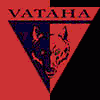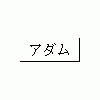Ciekawy artykul Rexa Applegata z 1980 roku :
By Rex Applegate:
A successful knife defense depends upon being able to see the attack
coming, or at least being forewarned through knowledge and training. A
knife assault is many times launched in darkness, or in such a way that
it is impossible to detect immediately the opening move of the attack,
such as drawing the weapon.
The soldier, military policeman, or law enforcement officer, therefore,
should use the following general precautions in any area where he
suspects a knife may be used against him. He should:
(1) Dominate any threatening situation by maintaining a bearing that
indicates confidence and aggressiveness.
(2) Keep his back well-protected at all times by keeping well away from
dark corners, the sides of buildings and driveways or by having a wall
or some other solid object immediately at his rear.
(3) Keep his own hands and weapons in such position that they are
readily available for undertaking immediately the proper offensive or
defensive action.
(4) Prevent being placed in such a position that unknown and suspicious
persons are within arm's reach of his body.
(5) Always watch the movement and position of any suspect's hands.
(6) In areas where slash knife attacks may be expected, wear heavy
clothing (overcoat, shortcoat, or other), since this will furnish a
certain degree of protection.
Even strict observance of these precautions will not always suffice to
prevent a surprise attack. On the other hand,too obvious precautions
against possible attack may indicate a lack of confidence and fear which
will only encourage an attacker.
If an attack is launched at close quarters and the victim of the assault
is unable to employ any of the common defenses, the only thing he can do
is try to block or parry the thrust or slash with his hands and arms.
Such a reaction is instinctive and is the only one possible under the
circumstances. Although inadequate, it is better to sustain a wound on
the arm or hand than one on the body, face, or throat area.
A number of unarmed knife defenses can be undertaken in certain
circumstances, but the soldier or police officer on duty should never be
without his weapons. He should rely on them first.
In police usage, certain types of knife attacks, such as those made by
demented persons, can be stopped or otherwise restrained by conventional
methods. At the other extreme is the cold-blooded attack made by the
criminal of the most vicious type. In such a case, few explanations will
have to he made if the officer draws his weapon and shoots the attacker
down. As in other cases, the degree of force used in knife defense is
dependent on the local situation and the judgment of the officer concerned.
If he is carrying a baton or riot stick, the policeman can stop such
knife assaults with this weapon alone. A sharp blow to the knife wrist,
hand, or elbow will often stop the attack long enough to permit a more
disabling blow.
In many cases, if the hand gun is drawn, the mere presence of the weapon
will deter the potential attacker. If time permits, a well-placed shot in
the legs or shoulder can he used to stop the assault. Other circumstances
may justify shooting to kill.
Kinds of Knife Defense
The following knife defenses are designed for situations in which the
individual is unarmed, or for some other reason cannot use the weapon
which he normally carries. It is here, especially, that knowledge of the
ways in which a knife attack can be made is valuable in estimating the
capabilities of the opponent. For example, the man who holds his knife
diagonally across his palm and carries it close to his side while
advancing to an attack in a crouch is obviously to be respected, and
defenses such as the parry and the block (shown under "Defense IV" and
"Defense V" on the following pages) cannot be used as effectively as
those discussed first.
DEFENSE I. Throw anything that is within reach, a handful of dirt, a hat,
a piece of clothing, furniture. Follow up by using any object at hand for
striking a blow; or use the feet in offensive action. Once the aggressor
has been momentarily stopped or disconcerted, a counterattack must be
launched immediately.
DEFENSE II. Use a chair. The chair defense against a knife man is good,
provided you have a chair handy. Grip it by the back and point the legs
at your attacker. Advance toward him, making short jabs as you advance.
The principle involved here is the same as that used in lion taming. The
knife man cannot possibly watch all four legs of the chair at once when
they are moving. He becomes confused and is susceptible to blows from
the feet, which can be directed towards his body in coordination with a
thrust of the chair.
DEFENSE III. Kick out the opponent's knee. When he is down, follow up
with an attack on other parts of his body. Stomp on his knife hand when
he goes down, or kick him in the ribs or the head. In some cases, a
block of the thrust, followed by stomping on his shin or top of the
foot, will suffice.
If you find yourself outnumbered and facing attackers who are apt to use
knives, back into a corner and use your feet to keep them out of arm's
reach. Never discount the value of the feet when facing an opponent who
is unarmed, or armed with a club or a bladed weapon.
DEFENSE IV. The parry is a good defense against the downward knife
thrust. It diverts the initial direction of the thrust as it sweeps
downward. This is better than the block defense, because the whole
length of the arm can be used. By using the right arm to parry to the
right, the hand holding the knife will follow down along the outside of
the body. Even in case the parry is not entirely successful, a flesh
wound in a nonvital area will result. Here again, the defender takes
advantage of the instinctive movement of thrusting his master hand above
his head in order to protect himself from the downward blow. The only
difference is that the movement of the right arm is a sweep to the right
across the front of the body in place of a block. Conversely, one can
parry the downward blow of a right-handed man, by using the left arm to
parry to the outside, but in this case the chance is greater of the
knife crashing through if the parry is unsuccessful. This is because the
defender's body is directly facing the knife man; whereas when he uses
his right arm, the trunk of his body is turned away from danger.
When you are faced with a knife held in the hand of an enemy for an
upward thrust into your abdominal region, the parry again is a good
means of defense. The parry can be executed either with the right or
left arm as follows. As the attacker makes an upward thrust, sweep your
right arm across the front of your body and catch the upward moving
knife arm on the outside of your arm. This will divert the direction of
the thrust to your right, or outside, of your body. The left arm also
may be used to parry the weapon to the right, but better timing is
necessary if the left is used.
Any forceful cross sweep of the arm in any direction, such as in a
parry, causes the body to pivot naturally out of line of the thrust.
Once the parry or block has been successfully completed, you must move
in close to your man and attack.
DEFENSE V. The block knife defense. Almost all the knife defenses
involve a block of the descending knife arm by grasping the wrist or by
using the forearm. However, these do not take into account the extreme
force of the downward thrust and its resulting momentum, which may cause
the blade to crash through such a defense and penetrate a vital body area.
Arm Lock Defense. The most common knife defense is the one which
utilizes a grip of the knife wrist by the left hand, followed by an arm
lock. In this, the momentum of the knife arm may crash through the thumb
to the knife's objective. Another danger in using the common block-type
defense-of grasping the knife wrist with the left hand-is that such a
method depends upon good light and perfect timing to make possible a
grip on the moving knife wrist. If the blow is sweeping down with great
force and the recipient tries to grip the wrist in his left hand, the
force directed toward the body area may be such that the thumb side of
the gripping hand is liable to give way, thus allowing the thrust to
continue toward its goal.
Block Defense. The block defense is best employed when the gripping hand
grasps the knife wrist while it is still cocked above the head, prior to
the time when the momentum. of the downward thrust is initiated.
A block defense against the downward thrust, which is more certain to
stop the momentum of the stroke is executed by crossing the arms and
placing them above the head, with the body in a slight crouch, so that
the arms are in the path of the descending knife arm. An attack may be
initiated when the knife arm is stopped. The same procedure is workable
against the upward thrust to the mid-section. In this case, the body
should be bent forward, so that the crossed arms divert the thrust away
from the body. A straight block of the downward knife-thrust, by the
forearm with the arm bent, is not advisable, since the momentum and
power of the blow are usually sufficient to cause the elbow to bend and
allow the blade to continue in its original direction. Block defenses
are best used against individuals striving to strike overhead blows with
clubs, and similar weapons.
Defense To Offense!
The key factor in concluding an unarmed encounter with a knife wielder
is immediate attack, moving in close to the attacker's body, once the
thrust has been parried or blocked. If the knife man is allowed to
withdraw and recover, the whole procedure will have to be repeated.
Either type of knife defense, parry or block, involves a certain amount
of risk. This risk can be decreased only by the increased proficiency
achieved in practice.
Instruction in knife defense must be preceded by a thorough
demonstration of the various types of knife attack. Afterwards trainees
may practice the techniques against one another. For this purpose rubber
knives, wooden knives, or pup tent pegs, as issued in the Army, are ideal
substitutes for knives.
_________________

Pulkownik Rex A. o nozu....
Rozpoczęty przez , Ponad rok temu
Brak odpowiedzi do tego tematu
Użytkownicy przeglądający ten temat: 1
0 użytkowników, 1 gości, 0 anonimowych
 FaceBook
FaceBook
10 następnych tematów
-
 Spyderco vs. Lansky
Spyderco vs. Lansky- Ponad rok temu
-
 Noze, wysylka, clo, papiery
Noze, wysylka, clo, papiery- Ponad rok temu
-
 ostrzałki w Warszawie
ostrzałki w Warszawie- Ponad rok temu
-
 SZOK TOTALNY
SZOK TOTALNY- Ponad rok temu
-
 CRKT Polkowski Casper -- pierwsze wrażenia
CRKT Polkowski Casper -- pierwsze wrażenia- Ponad rok temu
-
 Alternatywa do Bucka Protege...?
Alternatywa do Bucka Protege...?- Ponad rok temu
-
 Muela Mirage (Tornado)
Muela Mirage (Tornado)- Ponad rok temu
-
 Stalowy nóż bojowy U.S.A. SABER
Stalowy nóż bojowy U.S.A. SABER- Ponad rok temu
-
 Mikov Knife
Mikov Knife- Ponad rok temu
-
 QUICK-CLOT
QUICK-CLOT- Ponad rok temu




